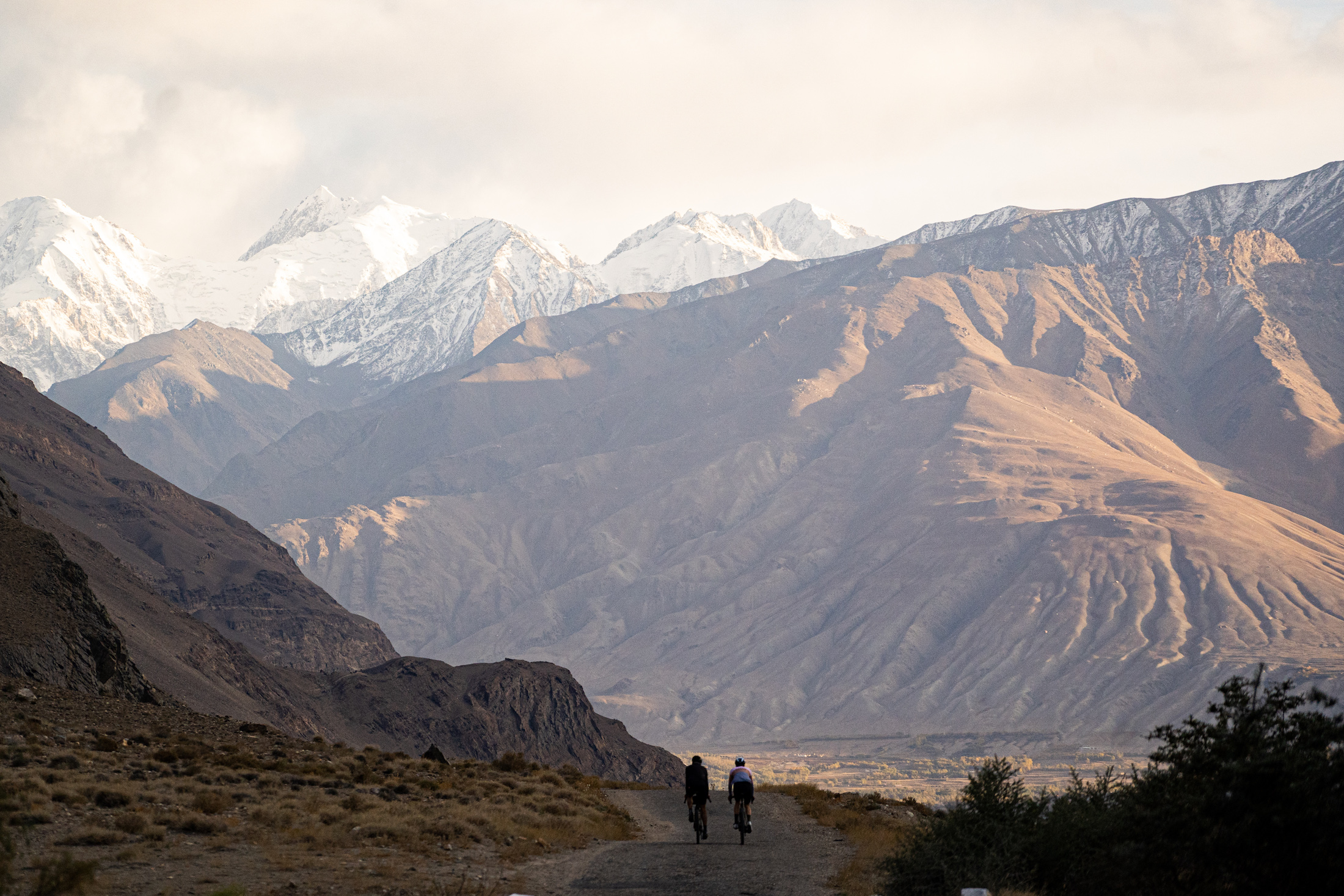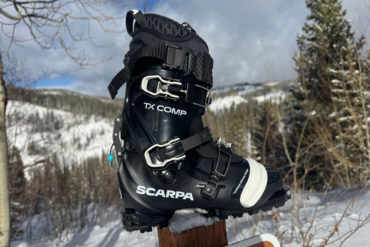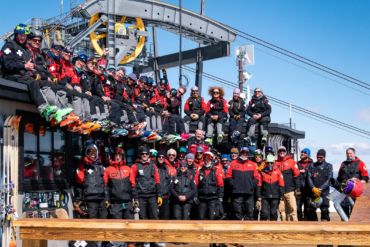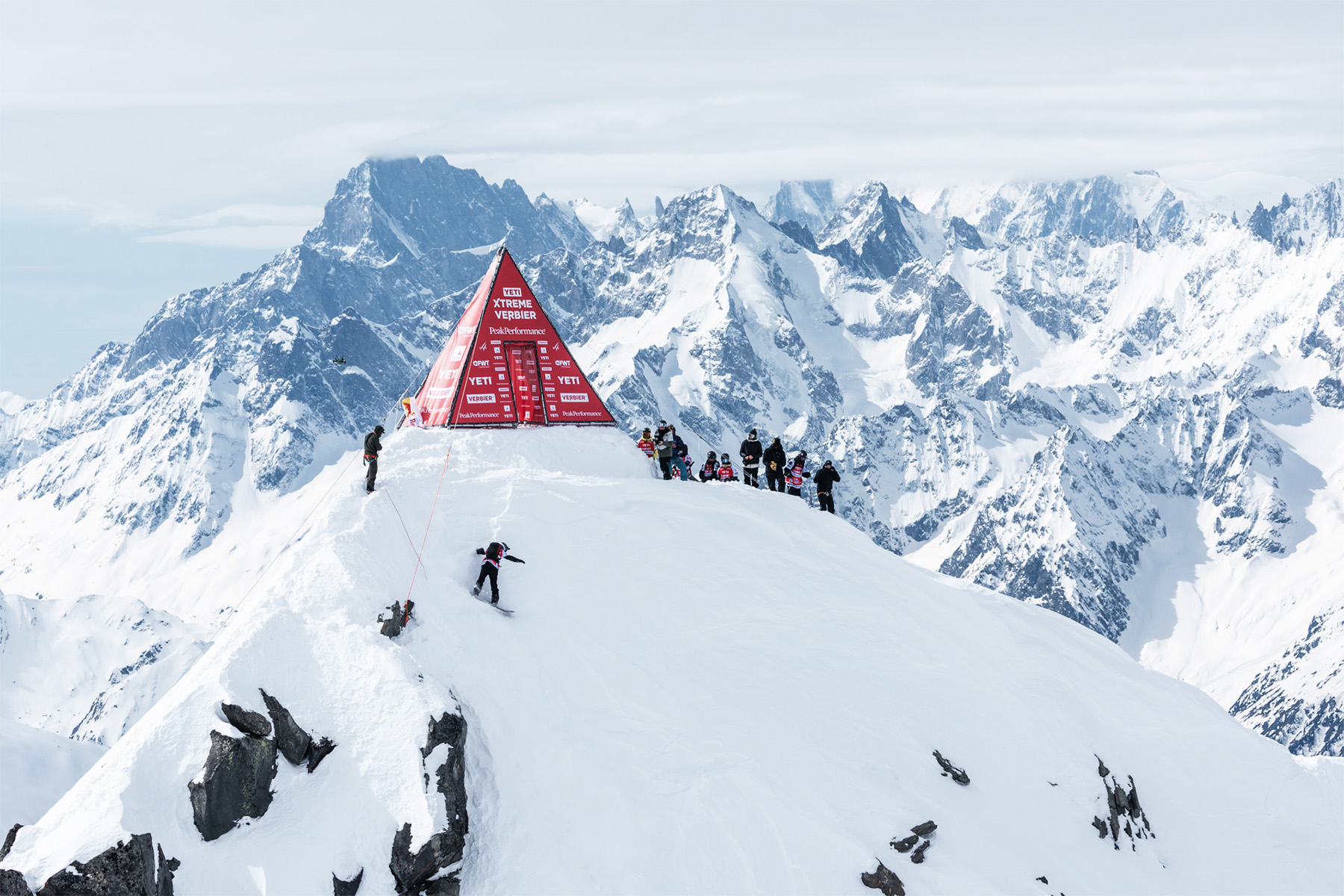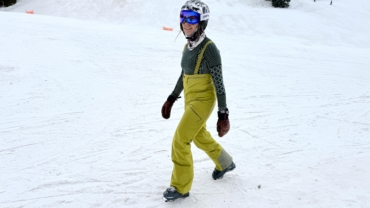Don’t let the snow stop you. Hop on a fat-tire bike and get ready to pedal all winter long.
It used to be that once the snow had fallen, cyclists around the world would put up their wheels for the season. Now with fat biking on the rise, avid cyclists can bike 365 days of the year.
From snow-packed roads to mountain bike and snowmobile trails, there are a lot of places to ride your fat bike. We’re lucky to live in a part of Oregon with plenty of snowy trails and nearly endless opportunities for winter bike riding.
If you live somewhere more urban, you might have to get creative. Reach out to your local bike shop for local tips on where to ride.
Tips for Fat Bike Fun
Whether this is your first foray into the sport of fat biking or you’ve been with it since the beginning, we’ve put together a list of our favorite tips that will keep you steadily rolling through the winter.
1. Use flat pedals.
If you’re coming from a cross-country mountain bike or road bike background where clipless pedals are the norm, this may sound ludicrous. Trust us, though, flat pedals with removable steel pins are the way to go.
Why? Because in the snow, you have to put your feet down a lot more. And since downhills on the snow are sometimes more akin to skiing than biking (you’ll slide and fishtail all over) it’s really nice to swing a leg out to the side for balance as you’re careening on the edge of control.
But the clincher is that snow and ice tend to ball up on the shoes, making it annoying, difficult, or even impossible to clip in or out during certain conditions.
Our bikes run the RaceFace Chester Pedals ($50), and we have no complaints.
2. Get a dropper post.
When riding a fat bike, one of the main differences is that you’re more frequently getting off and on your bike. Step even an inch off that packed trail, and you may find yourself nearly knee-deep. A dropper helps mitigate the hassle entirely, making the constant on and off a breeze as well as the downhills a little less scary and easier to handle.
It doesn’t have to be a super-fancy one, either. Chelsey loves her under-seat, lever-actuated one; it’s simple, easy to use, and even easier to install and work on.
The KS Exaform Hydro Dropper ($69) is reasonably priced and easy to install without much mechanical expertise. Just make sure you get the right seatpost diameter.
3. Learn how to layer.
Layering for fat biking is very different than any other winter sport we have done. Fat biking climbs are brutal, so you get super hot, and the descents are fast and cold — closer to alpine skiing.
On top, we love wearing a lightweight and very breathable fleece or a wool layer. For the descents, we add a wind jacket. For the bottom half, we wear standard bike shorts under a weather-resistant tight. Finally, we finish with our new favorite layering piece, a lightweight silnylon skirt.

Under our helmets, we have a thin wool buff that usually comes off halfway through the ride. And in our packs, we always have a lightweight synthetic puffy (next to our headlamp) just in case we’re out for longer than we intended — which happens more often than not!
These are our winter fat bike essentials.
icebreaker Bodyfit 150 Zone Long Sleeve Half Zip: $105
This thin, breathable wool base layer is perfect for winter fat bike rides big or small. Chelsey practically lives in hers from November to March. The half-zip is perfect for venting, and wool naturally keeps the stink out.
GoLite Pinnacle Jacket — Men’s & Women’s: $398
Having a lightweight wind- and rain-resistant outer layer that’s extremely breathable is key. For early-morning starts and long downhills, this piece helps cut the wind and keep our core and arms warm. We love this jacket because of its stretchiness and comfortability.
We can fit as many layers as we want underneath and also wear it on its own without feeling like we’re swimming in it. With 20K waterproof and 67K moisture permeability ratings, it will keep you protected and dry in a huge range of conditions.
Rab Alpha Flash Jacket — Men’s & Women’s: $125
The Alpha Flash fleece is the ultimate midlayer. It even beats out the need for a puffy, as it’s both warm and breathable at the same time. Often when we exercise in a puffy, we get clammy and sweaty fast.
With the Alpha Flash, we have yet to get too hot or too cold. The fleece is thin, making air flow through the fabric more freely. Yet it’s warm at the same time, making the body regulate its temperature nicely.
Also, at 273 g, if you do need to take it off and put it in your backpack, the weight is hardly noticeable.
Patagonia Micro Puff — Men’s & Women’s: $299
On super-cold rides or when we know we’re going to be stopping for more than a few minutes, we throw in our Micro Puffs. It’s synthetic, so it’s warm even if it gets wet and is so lightweight at 227 g, we always forget we’re carrying them.
UL Silnylon Skirt: $21
This skirt is surprisingly the most versatile layering piece of gear we have. From skiing to fat biking to hot jungle treks, we always have this with us. In the fat biking realm, it works as an amazing wind layer that takes seconds to put on and take off.
Rather than having to hassle with trying to put on wind pants over a pair of boots, the skirt simply wraps around the waist and is Velcroed in place. It scrunches up to the size of a small coffee cup for easy packing.
4. Go 1x drivetrain.
Simplicity is key. You really won’t need the same high and low gears as you would on a mountain bike. It’s too easy to over-torque and spin out on the ups, and you’ll always have significant rolling resistance on the flats. So even if you’re a die-hard 2x-er (and there are a few left out there), winter fat biking is made for a 1x drivetrain. Even a 1×9 speed is probably enough.
We used to run full 1×12 and almost never used the top or bottom of the cassette. Bonus, you can pick up 1×9 and 1×10 parts for next to nothing, and the chains are wider and more robust. Box Components is a company dedicated to 1×8 and 1×9 drivetrains with modern tech.
5. Protect your digits.
Because our hands control the brakes and gears and are the most vulnerable to the outside air, we have to keep them warm. The same goes for feet and toes. Protecting them from the outside elements is key, and it’s remarkable what a difference just a few pieces of gear can make.
Pogies for the hands and gaiters for the ankles to keep the snow out of your boots when you step off the bike into knee-deep snow.
For super-cold riding, we use shoe covers to add an extra layer onto our feet. We never leave home without these essentials; in fact, they’re always in our bags (or on our handlebars) ready to go.
While there are some very nice and expensive pogies out there, we have found that the lightweight neoprene ones work just fine.
6. Curb your expectations.
A 30-mile ride on flowing singletrack isn’t really an issue on 2.25-inch mountain bike tires. In fact, that’s an average ride for many avid mountain bikers. But on fat tires, sometimes going even a quarter of that is a feat, especially for first-timers.
Of course, if the conditions are perfect and the trail is nicely packed down, you can go for a long while. Just don’t go out expecting this, as conditions can change so quickly. And even a few degrees of temperature difference can make the going much slower (or faster if it’s getting colder). Think of fat biking as exploratory and adventurous.
7. Embrace the work.
Often, we’re the first ones at the trailhead and therefore the first to lay down tracks. Rather than seeing this as a bad thing, we look at it as a service to all the riders that will come behind us. We take turns leading so that the people behind can catch their breath. Breaking trail is hard work, but it’s great training!
In most fat bike communities, it’s an unspoken creed that you should break trail on at least one ride per month. It’s amazing the difference a few riders packing the trail can make. Sometimes, this even means snowshoeing a popular route after new snow the day before you want to ride it.
But this sort of special hard work is an acquired taste, so for your first several rides, try to stick on to the well-packed areas so you can learn to love the sport first. Many active fat bike communities have Facebook pages (like this one), where riders regularly report on conditions and suggested psi so fellow riders can have a great experience.
8. Drop that psi.
There’s a general rule among experienced fat bikers, “No pleasure? Lower pressure.” Ride enough, and you’ll see it in action as you struggle to churn up the soft snow while some other rider comes cruising past like they’re on pavement.
It turns out there’s an ideal psi for every condition. More times than not, you’ll have to drop the pressure to flatten out your tire. You want as much rubber as possible to make contact with the snow, especially your back tire.
Our local fat bike guru regularly posts condition reports with ideal psi. For the first year, we never believed him (who’d ever think riding at 2 psi is a good thing?), but we’re converts now. After all, the penalty for too low of psi is just more rolling resistance and softer ride — if the pressure is too high, you’ll just flat-out fail.
A fun upside to this is that flat tires are not nearly as big of an issue for biking on the snow. I’ve ridden 10 miles to get back to civilization on a totally flat tire — and it was some of the best traction ever.
There are a few occasions (like a perfectly groomed snowmobile track that froze overnight) that you want harder tires for, so it’s a great idea to add a small pump to your kit.

9. Mind your cadence and pedaling torque.
Our fat bike mentor used to say, “When you spin, nobody wins.” More than any other focus, we’ve had to pay attention to our cadence the most on fat bikes.
If we try to crank too hard, we spin out and dig our tires into the snow, making us slower and more tired — as well as pissing off anyone behind us who has to ride through the loose ruts. So find a pace, settle in, and learn to feel the tenuous and slippery connection between your tire and the snow.
This is especially important on the climbs, as the added torque from low gears can essentially destroy the very surface you’re biking on. When done well, it starts to take on a meditative quality of listening and adapting. Furthermore, in a group of riders, everyone will need to ride a bit differently based on weight, tire width, and tire psi.
10. Be prepared to crash.
As we mentioned earlier, fat biking is a unique beast. The equipment and fitness will be familiar to any mountain biker, but actual fat biking skills can be a bit nuanced compared to modern XC trail riding. Learn to embrace the feeling of semi-controlled descents — stay loose as your bike moves back and forth below you.
Rigidity often works against you, as it forces the bike tires to dig into a loose and movable surface instead of allowing the general momentum to carry you forward. Being a bit loose also works in your favor when you crash, as it feels a lot better on your body.
The good news is that sketchier conditions usually mean softer snow, which in turn means more comfortable falls. Just remember to use care (just like in skiing off-piste) when early-season conditions exist.
11. Anything goes, so be adventurous.
Much of the beauty in this sport is that you can go anywhere. Snow-covered forest service roads, snowmobile tracks, and snowshoe tracks are some of our favorite places to ride. The landscape looks so different with a fresh coat of snow blanketing it.
And many of our summer singletrack trails and gravel road loops become completely new to us with our fat bikes. One of our favorite yearly rides is a 12-mile ride out to a lodge. The road is only open to skiers, snowmobiles, and fat bikers. We love to wake up early, ride out, get coffee and breakfast, and then ride back.
And be prepared for the magic of spring when a rare phenomenon called “crust cruising” happens. The entire backcountry is turned into a fat biking playground of epic proportions. In our opinion, even a day or two of crust cruising each year is enough of a reason to own a fat bike.
In the past 5 years, we’ve found more and more joy in exploring winter’s gifts via bike. We hope you can take some of these tips to make your snow pedaling more enjoyable. See you on the crust!




